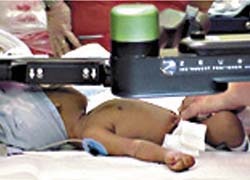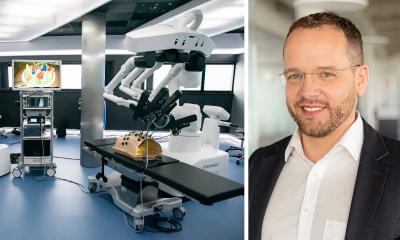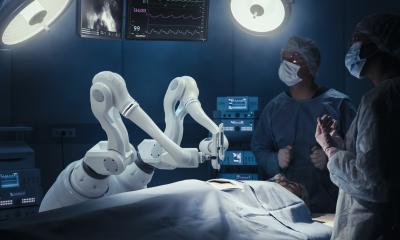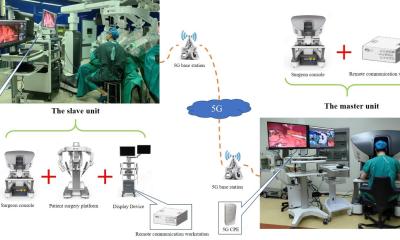Robotic surgery training
Robotic technology has helped to advance MIS - particularly for the very small anatomies of children. Among the newest innovations is the Socrates Robotic Telecollaboration System, which integrates telecommunication equipment, networked surgical devices and robotics, to enable remote teaching and surgical collaboration.

This spring, during paediatric endoscopic surgery training, this equipment was used in international linkups between Robert Banieghbal, surgeon at the Chris Hani Baragwanath Hospital, Johannesburg, South Africa, and Benno Ure, Professor of Paediatric Medicine at the Hanover Medical School, Germany.
The system’s manufacturer, Computer Motion Inc, specialises in the development of robotic surgical systems and provides equipment to 900 customers and 3,000 surgeons in 32 countries. The firm said this was the first international use of telecollaboration to introduce this new technology and MIS procedures to paediatric surgeons globally.
During the procedure, the operating surgeon fully controls the surgical instruments, but, via voice commands, the collaborating remote surgeon can also control Aesop, the robotic arm holding the endoscopic camera positioned inside the patient. Both surgeons see the same magnified area of the anatomy during surgery.
Three procedures took place, on 1-3 year-olds, including laparoscopy on a 2 year-old girl suffering severe gastroesophageal reflux (acid reflux). Mr Banieghbal, who is experienced in Nissen fundoplication procedures, also performed his first Thal procedure on a one-year-old boy, under real-time guidance from Prof. Ure. ‘This is a fantastic way to further surgical training,’ he said later.
Computer Motion also produces the Zeus Surgical System for MIS, and the Hermes Control
Centre, a centralised system that enables a surgeon to voice control a network of smart medical devices
30.04.2003











